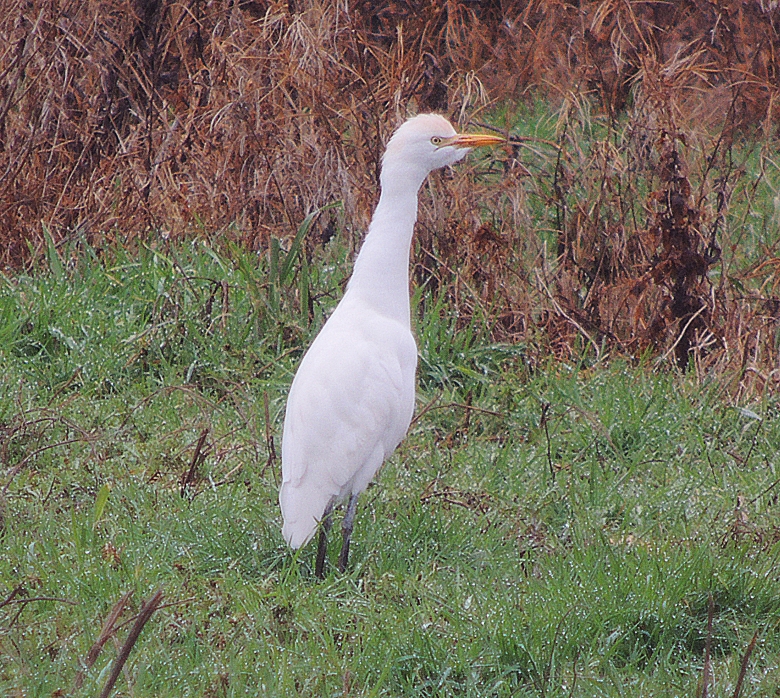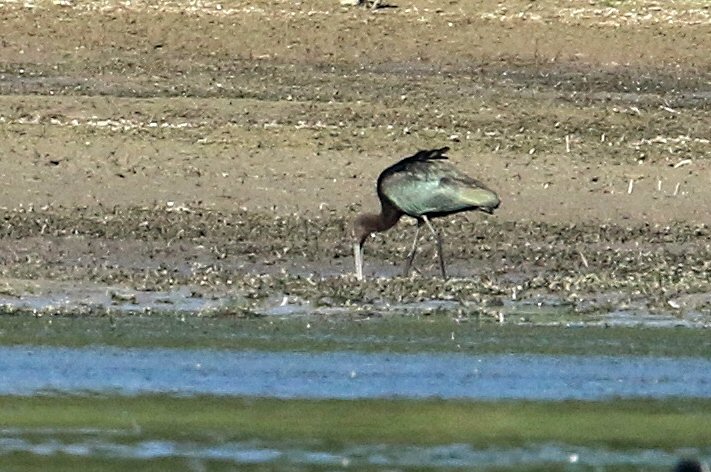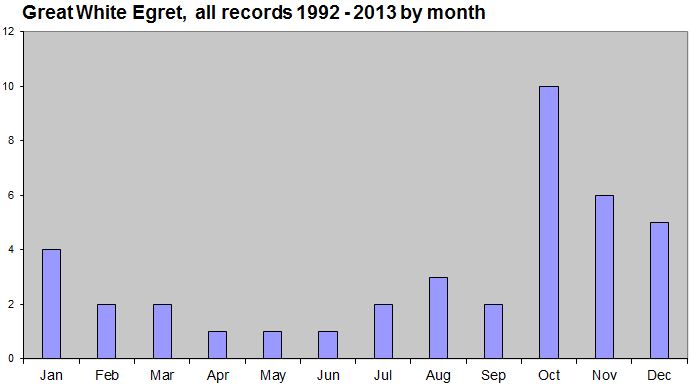It may come as no surprise to many but Northamptonshire now joins Cheshire, Dorset, Devon, Essex, Hampshire and Somerset as counties which have played host to breeding Cattle Egrets in the UK.
Discovered by Steve Fisher on 8th June, an adult apparently incubating eggs, within a mixed Little Egret and Grey Heron colony in the Nene Valley, gave rise to optimism that we were only a few weeks away from seeing successful local breeding.

Formerly a very rare vagrant, Cattle Egret has become a more regular sight in the UK in recent years, following several large influxes. The first in 2007 saw over 200 arriving throughout Britain and Ireland and resulted in successful breeding in the Somerset Levels in 2008. Another influx in 2016 brought even larger numbers, with further successful breeding in Cheshire in 2017, during which two more colonies were discovered, giving rise to a total of 10 pairs.
In Northamptonshire, Cattle Egret was first recorded in 2006, when one was present at Summer Leys LNR from 11th to 13th August. Others soon followed and individuals of this species were recorded in five of the twelve years between 2006 and 2017, with the first ‘multiple’ (two together) occurring only as recently as 2018. Up to 4 made a protracted stay at Stanwick GP between mid-October and mid-December 2018, after which singles appeared there and at nearby Ditchford GP in March this year, with 3 adults at Stanwick regularly from late May.

Breeding then followed and after hatching successfully, young were observed in the nest for the first time on 1st July. A week later they were looking significantly bigger and today (17th July) one was standing on the nest, stretching, walking and preening and fledging appears likely within the very near future. Because of the vegetation cover, it is not possible to be certain if there are 2 or 3 young at this point. One adult was in attendance and two more adults – making up the original ‘Stanwick three’ – flew in to join it after being observed with cattle at Stanwick some ten minutes earlier.

Interesting behaviour followed as two of the birds attended to ‘housekeeping’, one of the arrivals passing a stick to the attendant, which then proceeded to add it to the nest platform before breaking off another twig from a nearby bush and repeating the behaviour. According to BWP, both sexes engage in nest-building, the female taking sticks passed to her by the male, one at a time, before putting them in place, with material continually added to the structure during incubation and long after hatching.
Of further interest is that all three adults appear to be involved in the family business, i.e. the breeding pair has a helper, or even a ‘nanny’, if you will. Again, BWP states that temporary trios of two females and one male are not infrequent at the start of the breeding season but these three appear to have stayed together throughout.
Northamptonshire is not alone in producing a breeding pair in 2019. Others have bred in Hampshire and Essex, away from the initial location in the Somerset Levels.
The information on breeding has now been released on the basis that anyone who wants to see a Cattle Egret will have done so by now. Surrounded by water, the site is largely inaccessible and will therefore not suffer from disturbance, successful hatching precludes the possibility of potential egg-theft and the young will shortly leave the nest. It is also unlikely the site will be used again … but who knows?!
Rapid population growth and range expansion is characteristic of Cattle Egret, which is now probably the most widespread species of bird on the planet, having colonised Europe, the Middle East, and North America from Africa, and Australia from Asia.







 Lack of dark tip to bill (when not soil-covered) ages it as an adult. There have been 5 previous records, 4 of which have been in the same short stretch of the Nene Valley as this one. Previous accepted records are:
Lack of dark tip to bill (when not soil-covered) ages it as an adult. There have been 5 previous records, 4 of which have been in the same short stretch of the Nene Valley as this one. Previous accepted records are:





















